Facebook ads… Though recent news shows ad spend on the rise, this only indicates that demand is increasing for the powerful ways in which the platform enables its users to reach a wide, yet highly targeted audience.
It doesn’t even need to be said; It’s taken for granted – Facebook is the most popular social media platform in the world. And it doesn’t look like this is likely to change. Through 2017, the site saw 2.1 million active monthly users – a number that continues to rise.

(Source: pewinternet.org)
But the continuing growth of Facebook ad use, as well as recent changes to the Facebook Newsfeed algorithm, have created a situation where competition is higher than it has ever been. It’s a matter of fact: There are more marketers, businesses, and entrepreneurs on Facebook taking advantage of the ads platform to reach users.
If you try to compete with the rest, you will lose out.
The beauty of the Facebook ads platform is that you don’t have to compete (if you know what you’re doing).
Facebook makes it easy for any Facebook user to create an ad and pay to place it in front of an audience. This leads to a higher demographic of advertisers who are unaware of how to effectively leverage the ads system.
Many of the others competing for space on people’s screens are flying blind when it comes to competition because they simply think – “if I pay to put my ad in front of 1000 people, I’ll get some good leads.”
But this is not true.
Facebook gives you a whole suite of algorithms, options, and add-ons that enable savvy marketers to target untapped audiences, analyze competition, and put their ads on the screens of people who will be most likely to convert. You just need to know how.
Here, we go through 2 case studies of winning Facebook ad campaigns and tell you exactly how they beat the competition by miles, so you can too. Learn how with a little research, optimization, testing, and tweaking, you could create the right Facebook ads for your audience. Read on!
BionicGym – The Power of Continual Optimization
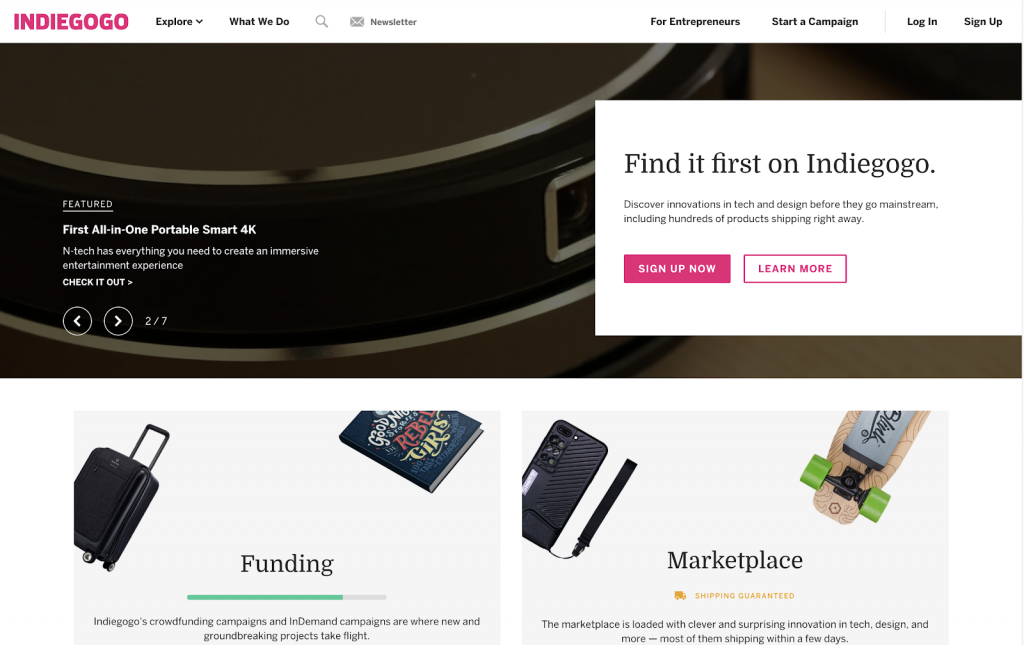
(Author’s screenshot)
While BionicGym may not be your typical e-commerce store, the team there have provided us with excellent insights on the campaigns that have generated them the highest returns. When starting out, the team were just learning through trial and error. But their diligence in researching and continually optimizing their ad strategy, provided them with a wealth of knowledge about how to leverage ads for the highest ROI (return on investment).
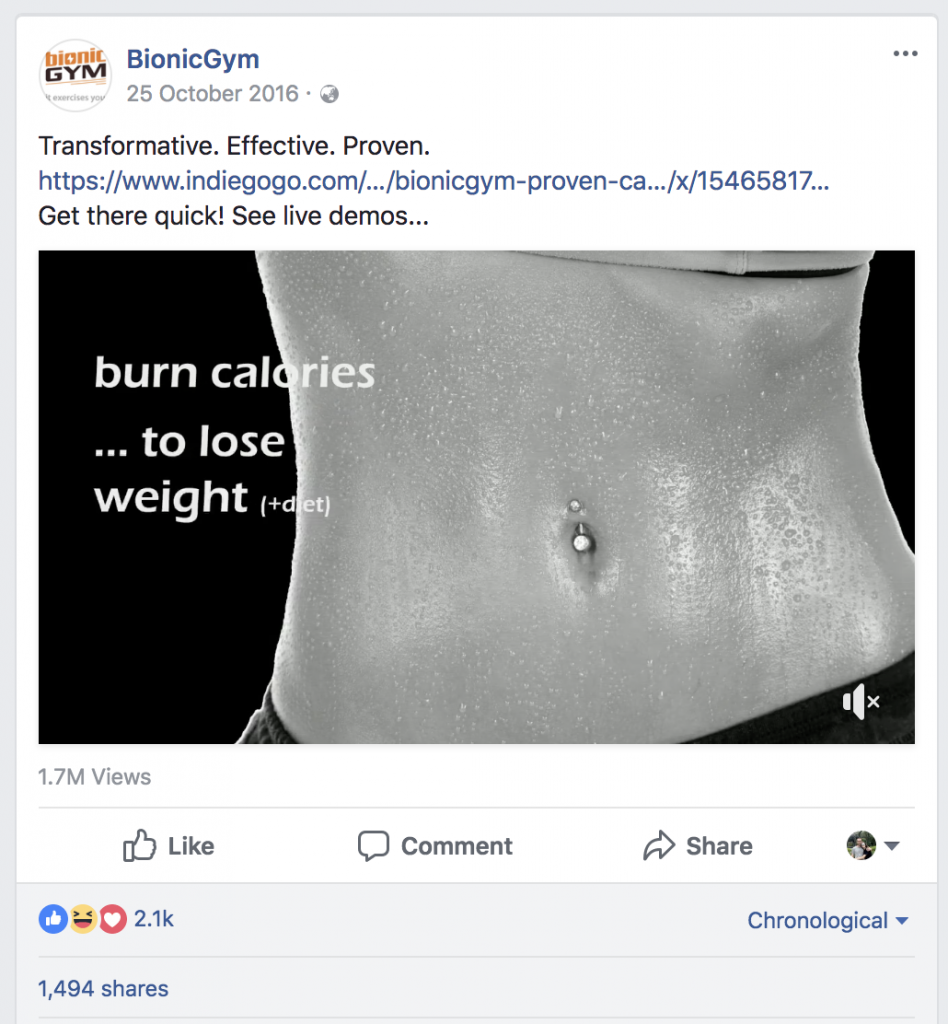
(Author’s screenshot)
BionicGym released the video campaign above in Video View and Video Reach ads on Facebook, promoting a niche, home exercise product. At first, they “seemed to achieve great results” – over 2,000,000 million users reached at a low cost-per-view ($0.004 per 3-second view).
It can be exciting to see your campaign reach so many people. But this is where many people stop. They assume they have got the most out of their ad and if it doesn’t result in a load of leads… well, “it must not have been the right ad,” or “the video wasn’t good enough,” or “the copy wasn’t catchy enough.” They have the results they paid for, what else could they expect?
As it turns out, BionicGym found their Video ads didn’t produce the conversions they were looking for. Many beginners see the same results when using Facebook ads for the first time – after a few weeks, even views plateau, and you are left with a bad rate of return on your investment. (And video ads are not simply an investment in terms of money. It takes a lot of time, effort, and resources to create a video ad in the first place – so you need to make it count.)
The team at BionicGym knew they could do better. They got an expert in to review their Facebook ads, and look what happened:
|
“How?” – you ask?…
Simple – they did the research. They…
- Asked a Facebook expert to review their initial campaign and provide feedback
- Diligently followed the feedback they received from experts and gained from research conducted online
- Started testing different targeting options and placements for each ad they put out to generate data and allow them to incrementally optimize their campaigns
Going by the advice they received from experts and the results they saw from their campaign efforts allowed BionicGym to learn from their mistakes and others’, in the following ways, to increase ROI:
- Changed the campaign objective from “Views” to “Conversions” – BionicGym wanted people to see their ads, yes, but they wanted them to see them and take action, as opposed to spreading brand awareness or simply engaging more followers. Telling Facebook exactly what you want to get out of a campaign helps its algorithms to put your ad in front of the right people to get you the results you need.

(Source: Author’s screenshot)
2. Split-tested various options for each ad campaign targeted to a particular country they wanted to reach. Initially, BionicGym were targeting the same ad to anyone and everyone across all countries. With people all around the world using Facebook, this is demonstrative of spreading your ads too thin. After taking some advice, they targeted different genders, ran ads with different placements (Newsfeed, Desktop), and ran different thumbnails of the video to entice people into watching, for all locations, then adapted accordingly.
3. Established a campaign to retarget everyone who visited their webpage and viewed the Facebook Video ad. The chances of someone who has already visited your Facebook page and your website buying your products are much higher than with people who have never heard of your brand or what you offer.
4. Began combining Lookalike audiences with interest-based targeting. BionicGym used lookalike audiences to target the 1% of people who were “most similar” to those already targeted by interest-group. This resulted in the highest ROI they had seen yet with cold leads (for even better results, use ConnectExplore and ConnectAudience in tandem to target your most promising leads.)
5. Used the auto-optimization feature to continually reallocate funds to different ads, according to how they were performing. This allowed them to keep their spending in check without the need to keep pausing or adjusting campaigns manually (meaning more time on people’s screens).
What Can We Learn from This?
The most important thing to keep in mind, whether you are implementing or optimizing Facebook ads, is to always be learning and adapting. Get advice from experts and articles on the web, continually reevaluate your targeting options using date and the knowledge you glean from your research, and keep testing different options to ensure you stay ahead of the curve.
We can’t stress this enough – Facebook gives you the power to narrowly target particular audiences. But if you don’t spend time learning from your mistakes and others, improving and optimizing your ad spend, audiences, placements, and goals, you will likely find that you get a good deal of hits and views on your ads, but not enough conversions. ROI optimization is all about “the hustle,” about working hard to improve your ads’ performance until they generate the returns you deserve. Keep this in mind as we look at a more specific and actionable takeaway from one of the most successful Facebook ad campaign tests ever.
Adobe – Multi-Product Ads – Winning with Diverse Audiences
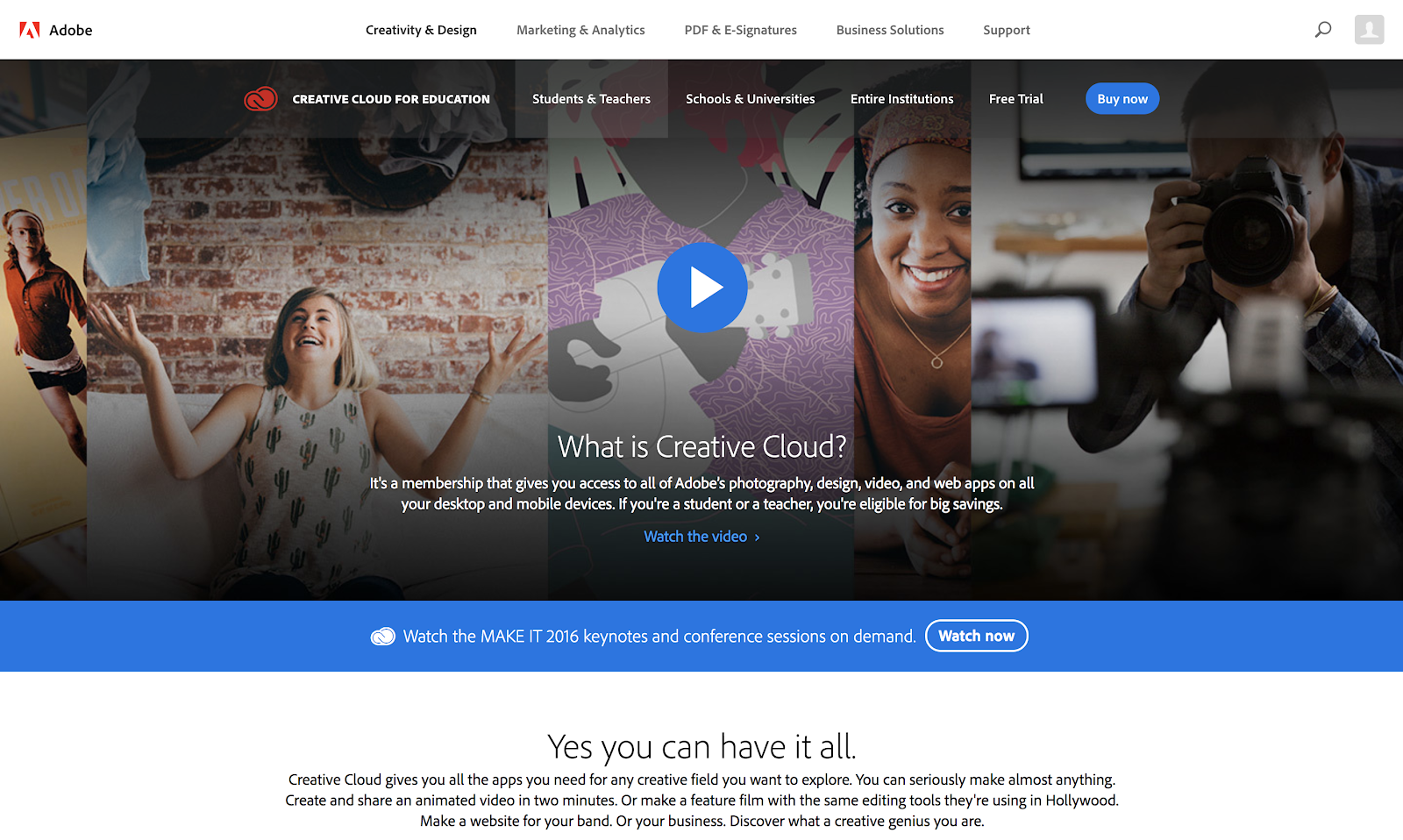
(Source: theblog.adobe.com)
The Carousel ad is one particularly tailored to the e-commerce space. Promoting multiple products in a single ad, means you are able to target your audiences with various products to suit different customer-types. This is particularly useful when you are starting out and unsure about exactly which products to aim at which sections of your audience.
Running these ads can also help you gather data to narrow down your approach in future campaigns. This can enable you to set wider targeting options than usual because you can put different products in your ads to meet the needs of different customers.
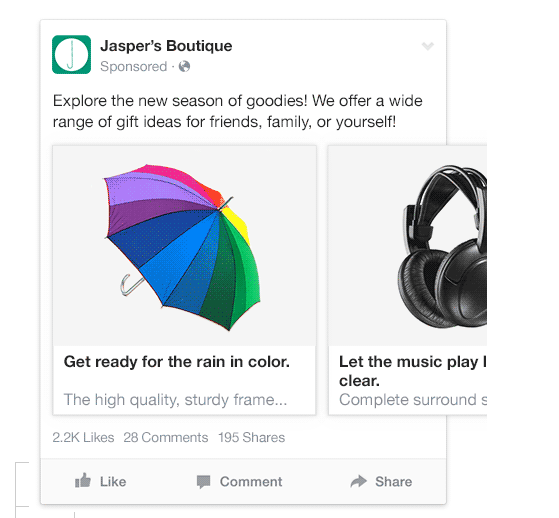
(Author’s screenshot)
When Adobe switched to using Carousel ads in 2014, they noticed an enormous improvement in terms of results. They tested two ads simultaneously with similar spends – the first, a single image ad, the second, a Carousel ad with multiple products and links.
The ads were targeted to Adobe’s education audience to promote various products to students and teachers. Due to this group being quite diverse in terms of the products that those people might actually want to buy, it makes sense to put multiple products out to people’s Newsfeeds, so they can explore the products and services that suit them best. Still – the team at Adobe could never have expected to see their results shoot so high by simply switching up their ad format.
Key Findings Included:
|
Comparison of Facebook Carousel ad Campaign (Education Customer 1) and Single Image ad Campaign (Education Customer 2)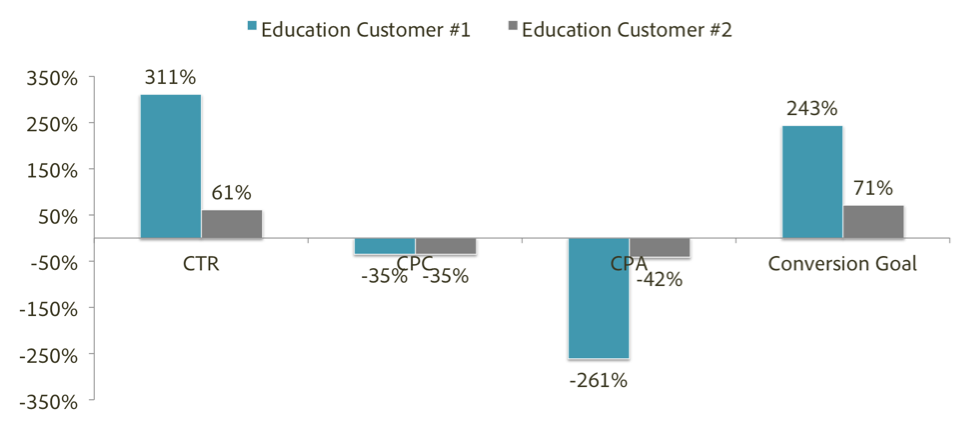
(Source: blogs.adobe.com)
Facebook multi-product ads give you the ability to show multiple products in a single space to meet the demands of a wide audience and to learn more about engaging different segments of it. The results speak for themselves!
Here’s how to take advantage of Carousel ads to generate leads for your e-commerce products:
- Target your Carousel ad to an audience that includes diverse “customer-types,” (such as, “students of different ages and teachers”)
- Write down the different customer-types that might be included in your audience (for example, high-school students, college students, creative students, business students, teachers, design teachers, music teachers, etc.)
- Use each slot (Image+link) in your Carousel to meet the potential needs of each customer-type you write down. Select products that might act as solutions to particular problems that specific sections of your audience may encounter (for example, design students might need an illustration program, but not have the funds to buy it at full price – promote the student discount you offer on your illustration software in order to cater to this customer-type with one of your Carousel slots).
What Can We Learn from This?
Adobe has an expert team of marketers. What you should take away from this campaign is not that “you should always use Carousel ads” but – (to repeat) – continual research and optimization are the key factors for creating an effective Facebook ad, the right way.
Adobe didn’t happen upon their findings by chance. They implemented the same, diligent, thorough, and strategic approach to ad creation demonstrated by BionicGym – an approach centered around testing, research, and evaluation. They saw how their ads were doing, and they wanted to do better. So they tested and tested until they found the recipe for success.
This does not mean that simply using Carousel ads will increase your ROI. It might – but only if you take this same approach, with a similarly diverse audience, and pick the right products to meet different customer-types. The key to success is always working hard to understand what your audience might want, testing it, and then evaluating and improving the ads you put out.
If you have a diverse audience segment, why not test out a Carousel ad alongside the other ones you are running right now, following this strategic and customer-focused approach? You might find it’s just the boost your business needs in 2018.
Moving Forward
In Neil Patel’s award-winning book, Hustle: The Power to Change Your Life with Money, Meaning, and Momentum, he writes this:
“The secret lies in making manageable tweaks and placing small bets on pursuits that propel you from who you are today to the person you’re destined to become.”
It’s as true for Facebook ads as it is for anything else – the more you put in, the more you get out. If you keep hustling with your campaigns, optimizing, automating, and testing, and following data and expert advice when you receive it, you will see your ROI incrementally increase. It does plateau… Facebook audiences are real people – and if you continually show the same ad, to the same group of people, your ROI will steadily decrease.
Of course, Connectio.io software makes generating new and untapped audiences as easy as a click of the finger. But not everyone can justify the purchase of a fully automated suite of “rapid results” targeting tools when they are just starting out. So – keep hustling.
As you hone your own knowledge of your customers, you will also hone your skills at using the Facebook ads manager to target your customers. Keep trying out new interest-groups manually at first, with a consistent, incrementally optimized approach. When you have generated enough revenue, you will be able to use industry-standard systems like Connectio.io to take care of a lot of the hard work for you. For now – keep hustling!

